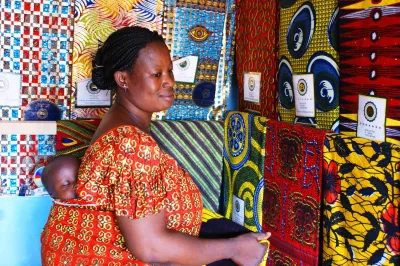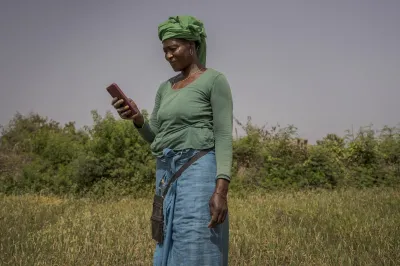Six To-Dos Now for Responsible Investors
Microfinance investors are now openly discussing responsible investment, including balancing returns and how to reduce risks of market saturation and over-indebtedness, more than ever before. Investors agree it’s time for action. At the mid-year Social Investor Roundtable, convening of the Sangam Group (CEOs of the 10 largest MIVs) and annual Development Finance Institutions (DFI) consultation on responsible finance last month they agreed on a “to-do” list of six concrete actions:
1. Join the discussion on balanced returns: Many participating investors had signed the Principles for Investors in Inclusive Finance (PIIF). Most agree that the balanced returns principle is the most difficult to pin down. The topic came up frequently: how much is too much, when it comes to prices and profits in the sector? Several MIV CEOs asserted that their commercial business model was the most effective way to drive responsible financial inclusion at scale. Eyebrows around the room shot up when one fund manager stated the target return of his fund: 20 percent. Other fund managers disagreed with the philosophy that such returns are consistent with responsible practice and desirable client outcomes. “We’re fooling ourselves” to suggest that there are few trade-offs between the financial and social bottom lines, they said. By policy some funds agree to take a lower return in the short run if it translates into better rural outreach or services like deposits that clients need and want. Sangam MIVs formed a working group on balanced returns and will feed their perspectives into related discussions led by the PIIF and Social Performance Task Force (SPTF). If you’re an investor, you should join one of these processes and help the search for a pragmatic but meaningful understanding on balanced returns.

2. Use the new Lender Guidelines on avoiding over-indebtedness. Market saturation was another hot topic: what can and should investors do about risks of market saturation and over-indebtedness? Investors in the AvOID Working Group have developed a Lender Code of Practice, which outlines steps investors should take in market analysis, due diligence, monitoring, and governance engagement. The Code has now been finalized and integrated in the PIIFs. Your investment organization can benefit by integrating the guidelines into your processes.
3. Support country-level research on market saturation and over-indebtedness: In addition to guidance that individual investors can use to rein in over-indebtedness, investors are also working together on analyzing such risks at the country or market level. DFIs and MIVs have supported this work in countries such as Azerbaijan, Bosnia-Herzegovina, Kosovo, the Kyrgysz Republic. Most recently, Blue Orchard, Incofin, and Oikocredit stepped up to jointly fund an innovative methodology in Cambodia that combined country-level proxies for market penetration, indicators of MFI lending practices, and surveys and qualitative research on borrower indebtedness and related factors. Findings were presented at the Social Investor Roundtable and will be formally released later this month. Sangam members committed funding to replicate the study elsewhere. Other investors can join and support expansion of this important work in additional markets.
4. Set reasonable covenants. Another investor working group has developed and adopted lender guidelines for covenants that support responsible microfinance, including practical guidance on acceptable investor actions when an MFI breaches a covenant. Recommendations include acceptable levels of Return on Assets (between 0 and 10%) and a requirement for investees to undertake a Smart self-assessment on client protection in the first three months. Nine investment fund managers and three DFIs have already endorsed the guidelines and several have started integrating them in their new loan agreements. Check out how your covenants stack up to this new standard of “reasonableness”.
5. Harmonize your social performance management indicators and make it easier for your partners and staff: The ALINUS working group (Aligning Investor Due Diligence and Monitoring Practices) has identified key indicators for partners to report on progress against the Universal Standards for Social Performance Management (USSPM). In addition to reducing reporting burdens, use of these indicators will help ensure comparable information from the analysis undertaken by investors, raters, and auditors. ALINUS invites investors to comment on a draft set of indicators next month. Another cross-industry group is working to develop a full set of USSPM indicators, which will go out for public comment in May.
6. Be more transparent and report. For the first time a group of investors reported on their implementation of the Principles for Investors in Inclusive Finance while piloting the PIIF Reporting Framework. Results are encouraging and summarized in the PIIF Report on Progress. From now on reporting will be mandatory for all signatories, which should create more accountability. Even investors who have not yet signed up to the PIIFs may find the reporting framework a useful tool to assess how well they are doing on their investment practices.
These heated debates and coordinated investor efforts are good news. They signal maturity and investors’ desire to move beyond the crises to concrete actions – individually and collectively -- that will help make the sector more responsible. Taken together with recent initiatives to certify MFI compliance with the Smart Campaign client protection principles and to improve transparency on responsible investor behavior through the PIIF, they demonstrate momentum and sincere steps to define what precisely the microfinance sector means when we say we are learning from experience.




Comments
A covenant for responsible
A covenant for responsible investment
Responsible investment in MF sector requires adequate acumen on the dynamics of poverty sector and perception on responsible absorption of investment in the given heterogeneity in local socio economic condition in host countries. Following are suggested to do for responsible investment with geographical categorization
The irrational investment in MF sector in the past , has been more for geo political interest and was blended with economic orientation focusing more on institution building and delivery modes rather than human development interest with geo socio cultural identity.. Contextually many ground level factors have not been drawn to the attention of investors adequately such as complicated micro credit functioning at client level , inclusion with subsequent exclusion , reliance of monolithic solution on micro credit market saturation, over crowding, over indebtedness, etc due to lack of financial discipline and planning .
Western and European countries
Investment purpose only for Micro credit services (credit alone school) –- focus on financial asset for challenging economic deprivation in low income sector
-Ensuring accountability and ownership of hosting nation at national level and community at filed level with a set of covenants for lending guidelines for responsible delivery
-Clear identity of low income people and prudent credit planning for both IG activity and consumption smoothing
-Close monitoring country and market level risk for avoiding over crowding and market saturation and end use of credit through credit bureau
-Balanced return on investment both for the lending institution and the client
-Insistence of Client protection principles (CPP)
-Result based M&E integrated right from planning to end of the project making Transparent process implementation
-Rating based on financial indicators harmonizing with social performance management indicators
Asia and African countries & the rest
Investment purpose for all Microfinance services (credit also approach) - - focus on human asset development for challenging social vulnerability and economic deprivation in poverty sector
- Uniform perspectives between investors and hosting nation/ community on accountability & ownership Conditionality ( no political & strategic interest) and fungibility (without any diversion)on the investment that enable for responsible inclusion to hosting nations and community
-.Ensuring identification of the most vulnerable in the bottom and the poor based on criteria such as vulnerability , deprivation, and capability
-Ensuring product diversification for Microfinance (savings+insurance+pension+transfer services) and no first use of micro credit
-Ethical based approach with prioritization and sequencing the MF inputs depending on client’s vulnerability
-Ensuring microfinance planning based on risk at client and activity level for avoiding over crowding, multiple lending , multiple borrowing, over indebtedness market saturation and funding for infrastructure which support productive functioning of MC ( E.G. Chilling plant for dairy scheme, marketing yards for products of the poor, )
-Transparent Client protection principles for ensuring Integrated financial services with nonfinancial services involving respective (development) actors for securitization and hedging the loan asset and human asset at client level collectively
-Development rating with locally determined different social performance measurements in terms of graduation of the ultra poor (bottom) and reduction of poverty and inequality
-Multi disciplinary rating system focusing more on ethical and social aspects along with financial ones in their goal achievement
-Result based M&E integrated right from planning to end of the project making Transparent process implementation.
Dr Rengarajan
Add new comment